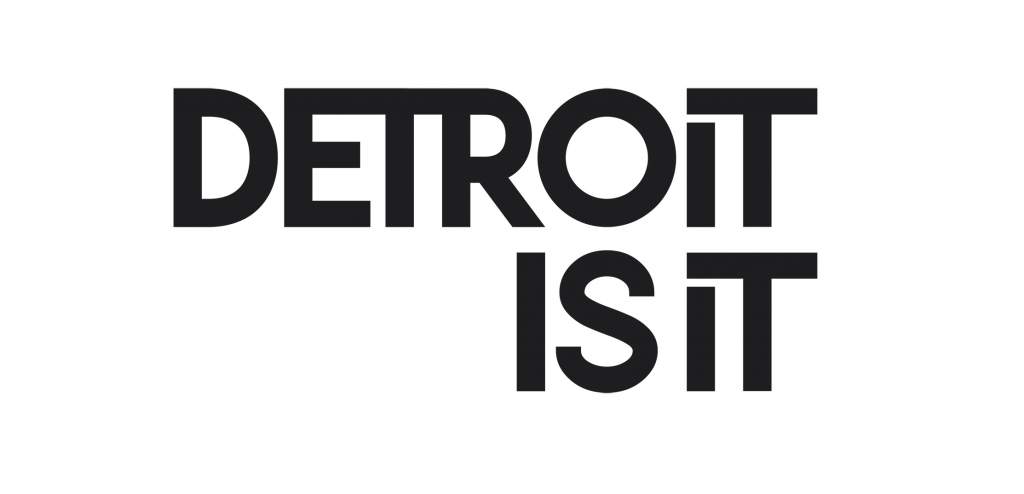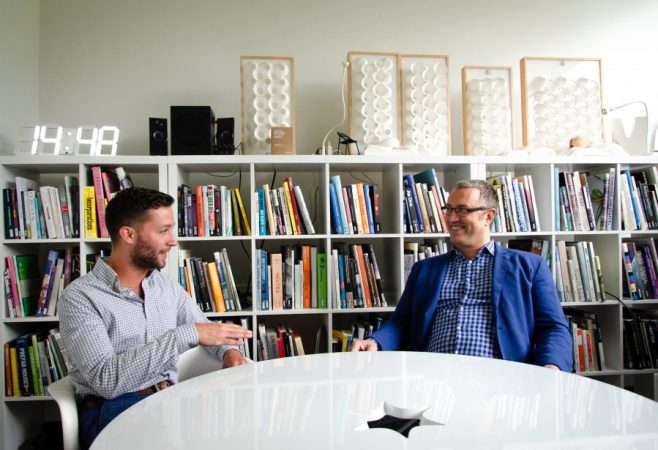Karl Daubmann, Dean of Lawrence Technological University’s College of Architecture + Design—and my boss, for the sake of full transparency—sits down with me to discuss some of the trends emerging in the design industry and ways in which LTU’s CoAD is responding.
Anyone who knows Karl Daubmann knows that he is a design and tech man—holding a Master of Science in Architectural Studies from MIT, former VP of design at Blu Homes and recipient of the prestigious 2015 Founders Prize from the American Academy in Rome, for his investigations into fabrication and assembly techniques of stone and concrete construction as advanced through robotic technologies.
There’s no doubt Karl Daubmann has his finger on the pulse of the industry’s advancement and has plenty to share.
A TALK WITH KARL DAUBMANN
Chris Stefani: Define architecture for me. Define design.
Karl Daubmann: Really—that’s how you’re going to go about this?
CS: Just trust the process.
KD: No, bad question – rephrase.
CS: Fine, talk to me about the dynamic between architecture and design as it relates to LTU.
KD: Architecture has been in existence at LTU since 1962 and we are well known for putting out professional, focused architects. We are working to take a broader view – as architecture is a discipline within design – within design education and through professional degrees. As the program progresses, we start getting more specific about the subsets of design. So architecture is design – but architecture has certain constraints. Car design is design – but it has very different constraints, markets and demands. As is the case with game art, graphic design, interior design and more. They are all design but there are different disciplinary aspects within these subsets.
CS: Ok, so as we see trans-disciplinary design practices expanding – I think of Tom Ford, educated in architecture but leading his own fashion house – it begs the question, “Is architecture a degree that is a subset of design but lends itself to being more practical with regards to trans-disciplinary design practice than others?”
KD: That’s a good question. There are many instances of people that are trained or educated as architects and go on to do other things – but also, there are less examples of people educated in something else becoming architects.
Some of that has to do with the professional regulations – the health safety and welfare that governs the practice of architecture – that makes it so you can’t be trained as, say a fashion designer, and then become an architect. Whereas there are no professional qualifications inherent in other design fields – well certain design fields – allowing an architect to practice other types of design.
With that said, they’re not always the best example; and many people would say that’s because architects are so used to structure. So, there are cars that have been designed by architects – they’re a little strange. They’re boats designed by architects – sometimes they’re a little strange, too. But their fundamental base is rooting in critical thinking and problem solving – which makes them potentially compatible.
CS: So you talk about critical thinking as it relates to architecture and design. We know that the ability to think critically is becoming more sought after every day. What role do you think architects/designers are going to play in the future of the industry? Is there a role? Is it traditional or more trans-focused?
KD: Well, a lot of these things we are talking about within the College – so big trends that are happening in the world around talent, tech and these types of issues are applicable to the practice. What people are clamoring for as a future member of the industry – because potentially the current education system doesn’t allow for that – is less focus on knowledge and more focus on critical thinking and agility.
And I think as an architect – even a designer more broadly – you’re trained that there is a problem, or you’re given a brief – an issue that you have to address, and you have to create something from nothing. You have to research that issue, then understand the constraints, the budget, and how to make it. So designers are really, really well trained to be able to think within new circumstances. Every project we take on is a new set of conditions that have to be addressed. And there’s are a lot of challenges in the world right now.
The easy solutions have already been done, and what’s left are really complicated problems that are interwoven with economics and culture and politics and education. Big, complicated, hairy topics. And so, someone who stays in their lane and understands how they have always done something is finding it increasingly difficult to figure out these types of problems. I think designers are really well suited for that given their education – given that we have to learn new things with every new project that we take on.
So, we are used to adapting to new technologies, operating within certain constraints and breaking others – and I think that those are key skills that people need in the world today regardless whether they are going to be a designer or architect – I mean – even becoming an entrepreneur – those abilities make us valuable.
I have a friend who says “You can ask someone to design a corkscrew – or you can ask someone to design something to open a bottle. And depending on what you ask, you’re going to get something different.”
CS: Makes sense – so with regards to education, do we get rid of disciplinary focused degrees and push towards the overarching idea of design?
KD: I think disciplinary education is both an opportunity and a constraint and requires a delicate balance. There is something to be said about disciplinary specificity. To not have that means you may not be able to delivery on anything. I think to be a really good architect you have to be able to deliver a really great building. But there are ways, potentially through collaboration or other means, to be knowledgeable about how others think and operate.
Sometimes the fastest way to innovate is to see the methodology of someone else and adapt that in your own field. So its about being open to the ways in which others are working – but not necessarily doing their work. You can be a really good architect and have an amazing strategy for the graphics of something, but you don’t have to be the graphic designer as well.
You can however be sensitive to what a graphic designer might be thinking about. So, to come back – none of us want to give up the disciplinary specific issues and education – because then we lose what differentiates LTU – but I think having a broader view of design is better.
CS: So, what are you implementing at LTU that supports this sift in practice and pedagogy?
KD: The thing that I would highlight is the way we have thought about our undergraduate degrees. In the freshman year all the students in our college take Basic Design, so there is this opportunity to come together and learn basic elements and principles – symmetry, proportion, balance, compositional ideas – then in subsequent years (sophomore, junior and senior) we spend time getting very specific about disciplinary issues.
We now bring all of the students back together for a new senior leadership course to talk about practical entrepreneurial and ethical issues as it relates to the broader topic of design. This course is paired with the professional practice class in each discipline – but acts as more of a meta professional practice; dealing with the boarder issues of practice styles, the difference between management and leadership, ethical implications of choices. We know that the more technology there is, the more ethical issues we are going to see arise.
Privacy, bioethics, we are starting to do things that are going to have huge consciousness. So how then do we position ourselves and our future designers as it relates to those issue. Karl Daubmann Karl Daubmann Karl Daubmann Karl Daubmann Karl DaubmannKarl Daubmann




















